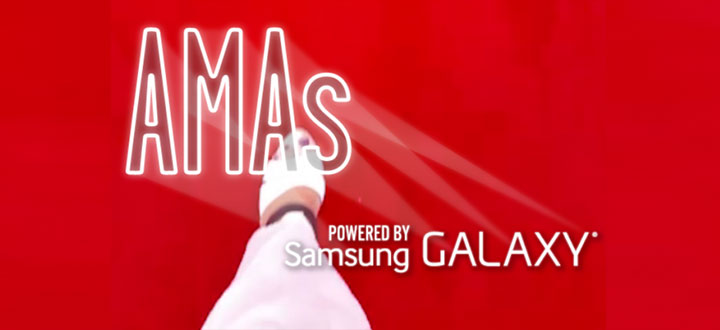Non-celebrities usually do not have the privilege of attending the American Music Awards (AMA), making it difficult for them to view the performances and award ceremonies unless they sit in front of a live streaming TV. However, the 42nd AMA that was held on Nov. 23 at the Los Angeles Nokia Theatre was delivered to a wider audience through its partnership with the messaging app Snapchat. As all Snapchat users received live feeds of the AMA through a feature called “Our Story,” singers’ performances could be viewed worldwide.
Similar to Twitter hashtags, which organize people’s posts around a given event, Snapchat’s Our Story allows people to collect “snaps” with friends from specific live events. As seen during the AMA, Snapchat has taken this feature and expanded it by targeting brands, especially popular television events like the AMA. Anyone tapping through would see a mixture of photos and videos from the awards, sponsored by Samsung and its Galaxy smartphones and tablets.
“Whenever I do not have any snaps to check, I visit the Our Story section to see what my friends are up to,” Daniel Shin (10) said. “Because people like myself check Our Story very often and it satisfies the short attention span of smartphone users, I do think that Our Story is an effective way to advertise exclusive, large-scale events like the AMA.”
Even before this year’s AMA, there have been multiple cases of partnerships between social media platforms and large-scale events to advertise products and services. Since 2012, award presenters of the AMA used Samsung’s Galaxy Note to reveal its winners, instead of the traditional method of opening an envelope. Furthermore, Twitter Amplify, a channel that enables media companies and brands to capture and distribute live events to fans and audiences, has partnered with various organizations such as the National Basketball Association to stream live clips of basketball highlights.
“In the past, companies were only focused on promoting their own enterprise,” said Virginia Seefeld, math teacher. “Now, companies are collaborating and helping each other advertise their firms. However, the concern I have is that [this large-scale collaboration] could negatively impact teenagers, who are especially susceptible to social media and advertisements.”

